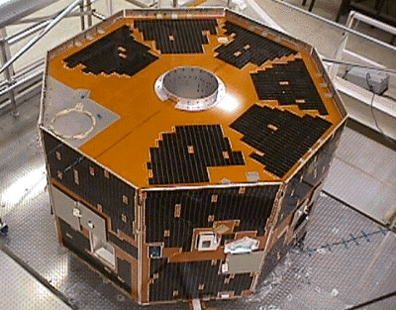Long Lost NASA Satellite Found by Amateur Astronomer
February 21, 2018
Scott Tilley, an amateur astronomer, was searching space with his radio equipment and detected something interesting on January 30, 2018.
His radio equipment picked up a signal from the Imager for Magnetopause-to-Aurora Global Exploration (IMAGE) satellite, a lost NASA satellite. NASA lost contact with IMAGE in December of 2005, and the search for the $150 million satellite ended after two years because funding dwindled.
Patricia Reiff, co-investigator for the IMAGE satellite and professor of physics and astronomy at Rice University, worked on the IMAGE project since 1989. She told the Washington Post that she had never expected the satellite to be found again.
For Tilley, it was never about finding IMAGE. According to the Washington Post, Tilley was looking for ZUMA, a different satellite launched in January 2018 by an unknown agency. Designed to be an invisible spy satellite, Zuma is thought to be lost with no clear reason for its disappearance.
Tilley told the Washington Post that he looked for ZUMA because, “anybody should be able to look up and know those little dots moving across the night sky are not bombs.” Because of this belief, he and other amateurs banded together to track down every satellite that is meant to be invisible.
Scanning the sky with radio equipment, Tilley stumbled upon IMAGE’s signal, and almost ignored it. It was at an orbit much higher than ZUMA was supposed to be, but when he came across a stronger version of the signal later, he checked it against a standard catalogue.
Finding the signal came from a supposedly dead satellite, Tilley looked for the failure report for NASA to understood what had happened. Though no one is certain what caused IMAGE to stop working in the first place, NASA scientists have theorized that it could be restarted.
IMAGE is equipped with a solar powered battery, which is designed to reset its computer, and flip its breakers to restart if the battery is drained enough. NASA believed IMAGE would come back to life in late 2007, after its battery was drained during a solar eclipse, and when that didn’t happen, NASA stopped looking for good.
Cees Bassa, an independent astronomer, theorizes that the 2007 eclipse might not have drained it enough to cause a reset, but the 2014 or 2016 eclipses did. Because of this, the satellite may have been discoverable for a very short time.
Now that it has been found, NASA’s biggest problem is reading the data. Scientists have recovered some “basic housekeeping data from the spacecraft, suggesting that at least the main control system is operational,” according to an update from NASA on January 30, 2018.
But the 12 year old operating system has to be recreated, so it may take some time to get the satellite fully operational again. NASA hopes that once they update the software, they will be able to recover some of the information that IMAGE has collected.
IMAGE was put into space to collect information on the magnetosphere, which is an ever changing sphere of magnetic gas surrounding the earth that protects us from the sun. This layer of the atmosphere creates a barrier between the earth and harmful solar winds, while letting light through.
Plasma flows and ripples in the solar breeze, like in an ocean. When these ripples come in contact with the earth, they can sometimes cause storms and, when the storm is violent enough, it can knock out satellites or even power grids on earth.
IMAGE was the first venture into photographing this layer of the atmosphere. It’s goal was to predict the weather. During its mission, it allowed scientists to view solar storms, essentially scientists could view and predict possible changes in the weather.
It also found cracks in the magnetosphere, and the sources of strange radiation. Through IMAGE, scientists also learned that the earth sends out part of its atmosphere to combat solar storms.
IMAGE had a successful mission, and now that is has been found, NASA scientists hope to gain even more information from the long lost satellite and put it back into use.










